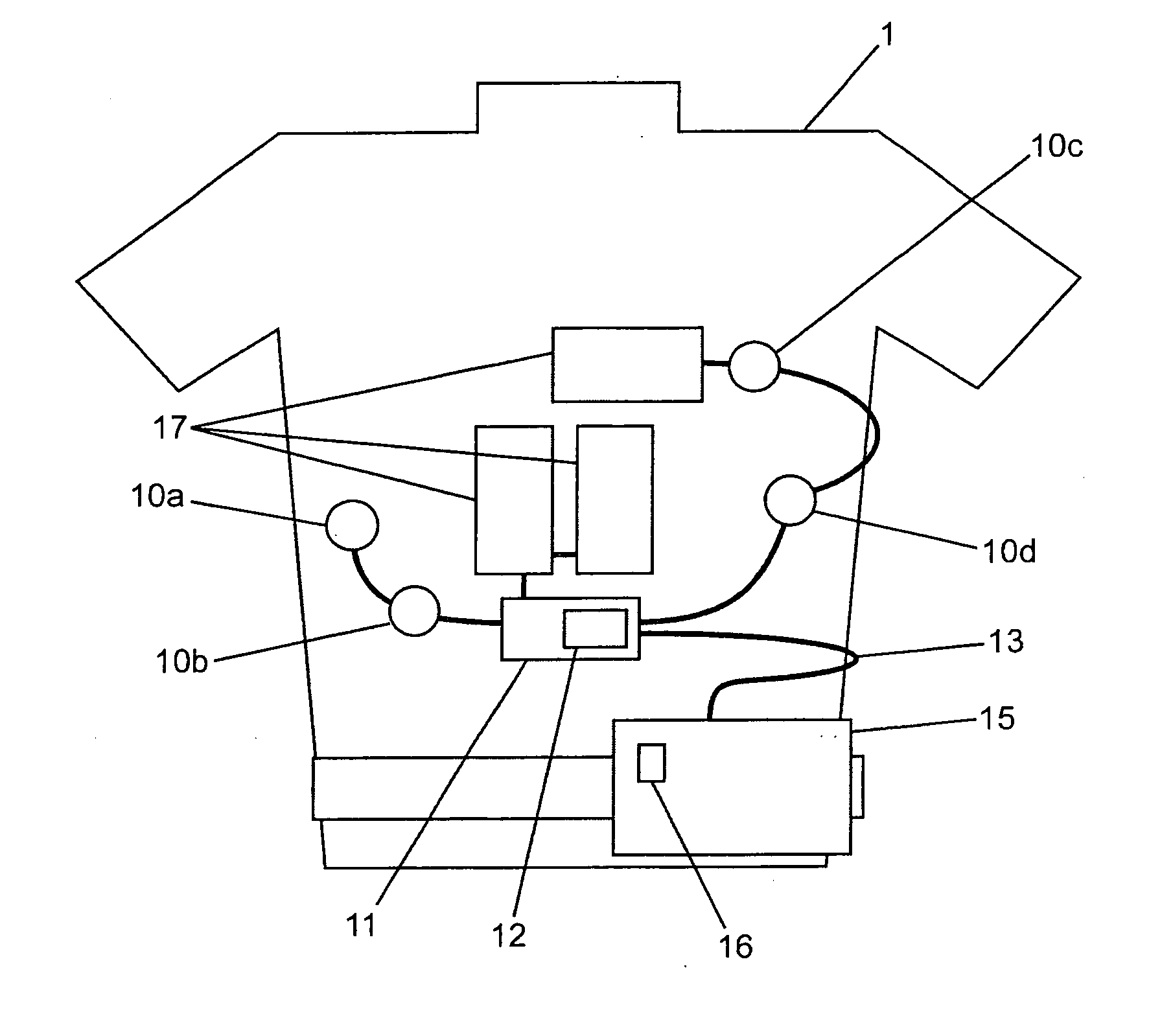Wearable defibrillator with audio input/output
a technology of defibrillator and audio input, which is applied in the field of wearable defibrillators, can solve the problems of patients at risk of sudden death, patients at risk of tachyarrhythmia, and patients undergoing coronary artery occlusion and myocardial infarction, and patients placed at an inordinate risk
- Summary
- Abstract
- Description
- Claims
- Application Information
AI Technical Summary
Problems solved by technology
Method used
Image
Examples
Embodiment Construction
[0027]Referring to FIG. 1, a wearable defibrillator may be worn by a patient and may include a belt or harness or other apparel configured to permit the patient to wear the defibrillator. Sensors, such as electrodes 10a, 10b, 10c and 10d are removably attached to the patient when the wearable defibrillator is worn by the patient. The electrodes 10a, 10b, 10c and 10d form part of electrode assembly 11 and are operatively connected to a processing unit 15 via a trunk cable 13. In some embodiments, the processing unit 15 may include, without limitation, one or more processors, one or more controllers and / or one or more programs or other software stored in memory operatively connected to one or more processors.
[0028]The processing unit 15 is operatively connected to therapy pads 17, at least one tactile stimulator 12, electrode assembly 11, and one or more audio devices 16. The audio devices 16 may include, for example, a microphone and a speaker. The therapy pads 17 are removably conne...
PUM
 Login to View More
Login to View More Abstract
Description
Claims
Application Information
 Login to View More
Login to View More - R&D
- Intellectual Property
- Life Sciences
- Materials
- Tech Scout
- Unparalleled Data Quality
- Higher Quality Content
- 60% Fewer Hallucinations
Browse by: Latest US Patents, China's latest patents, Technical Efficacy Thesaurus, Application Domain, Technology Topic, Popular Technical Reports.
© 2025 PatSnap. All rights reserved.Legal|Privacy policy|Modern Slavery Act Transparency Statement|Sitemap|About US| Contact US: help@patsnap.com



